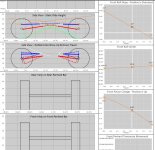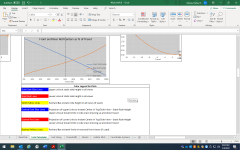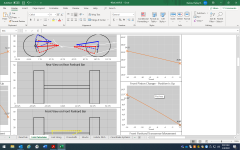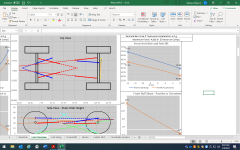Treefrog
Book Wheeler
Raising the roll center will make it more prone to jacking, which on a tall rig is probably more scary. A lower RC means better handling but more roll. It would probably be better to fight the roll by outboarding the springs more and/or using a sway bar.Yes I'm going to move the front uppers at the axle to 7-9" separation. I just want the roll center closer to the CG to help control body roll. As for the IC I thought having them more stable would make the rig more predictable throughout the suspension cycle?
The IC moving isn't a big deal, because that line doesn't show that the tires are also moving. The anti plots are much better representation of that. And they look pretty stable. I could be wrong, but I don't recall antis affecting how well the vehicle tracks straight. More so how it it preforms in acceleration, and somewhat how it reacts to gas and brake in a corner.




